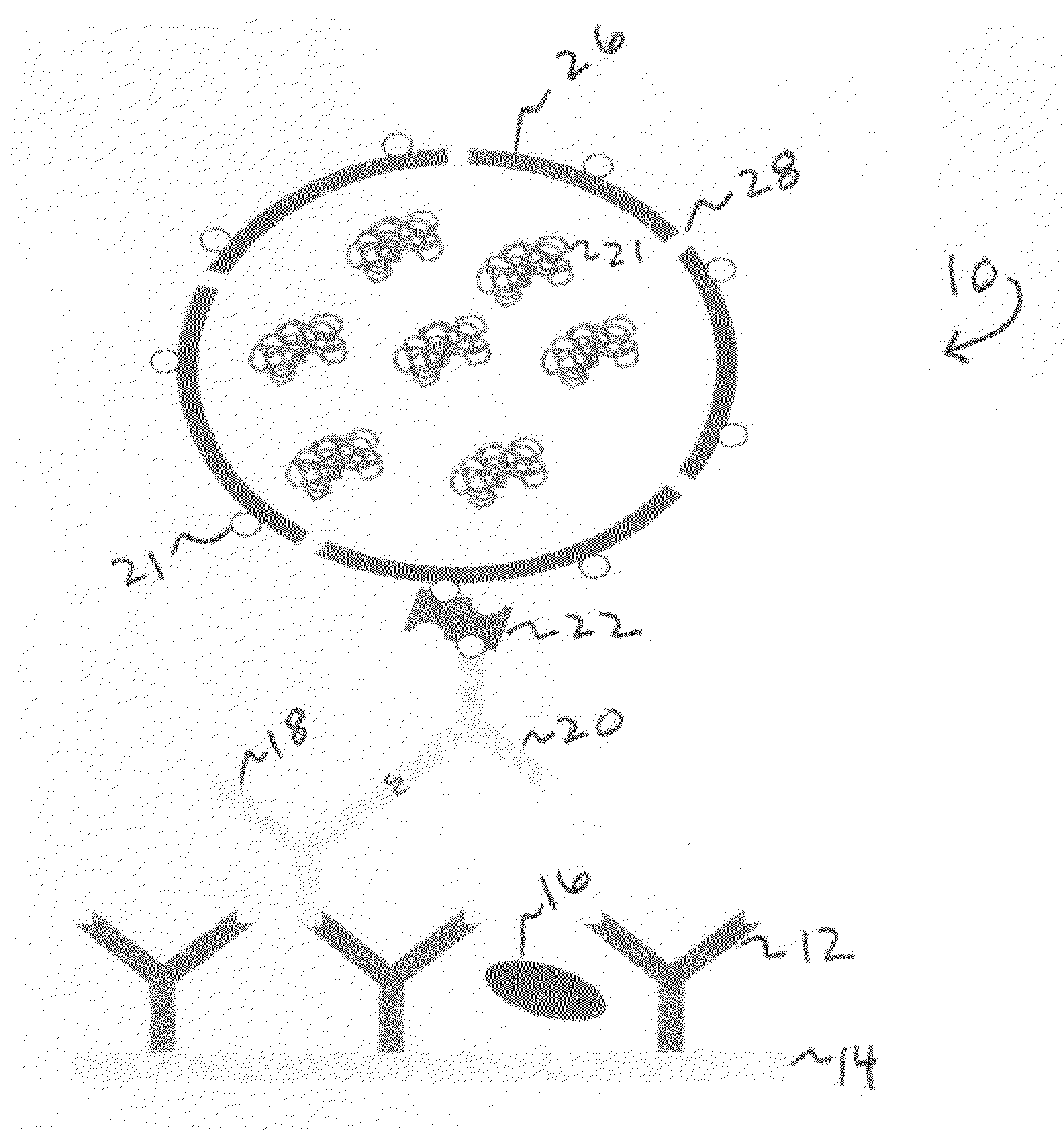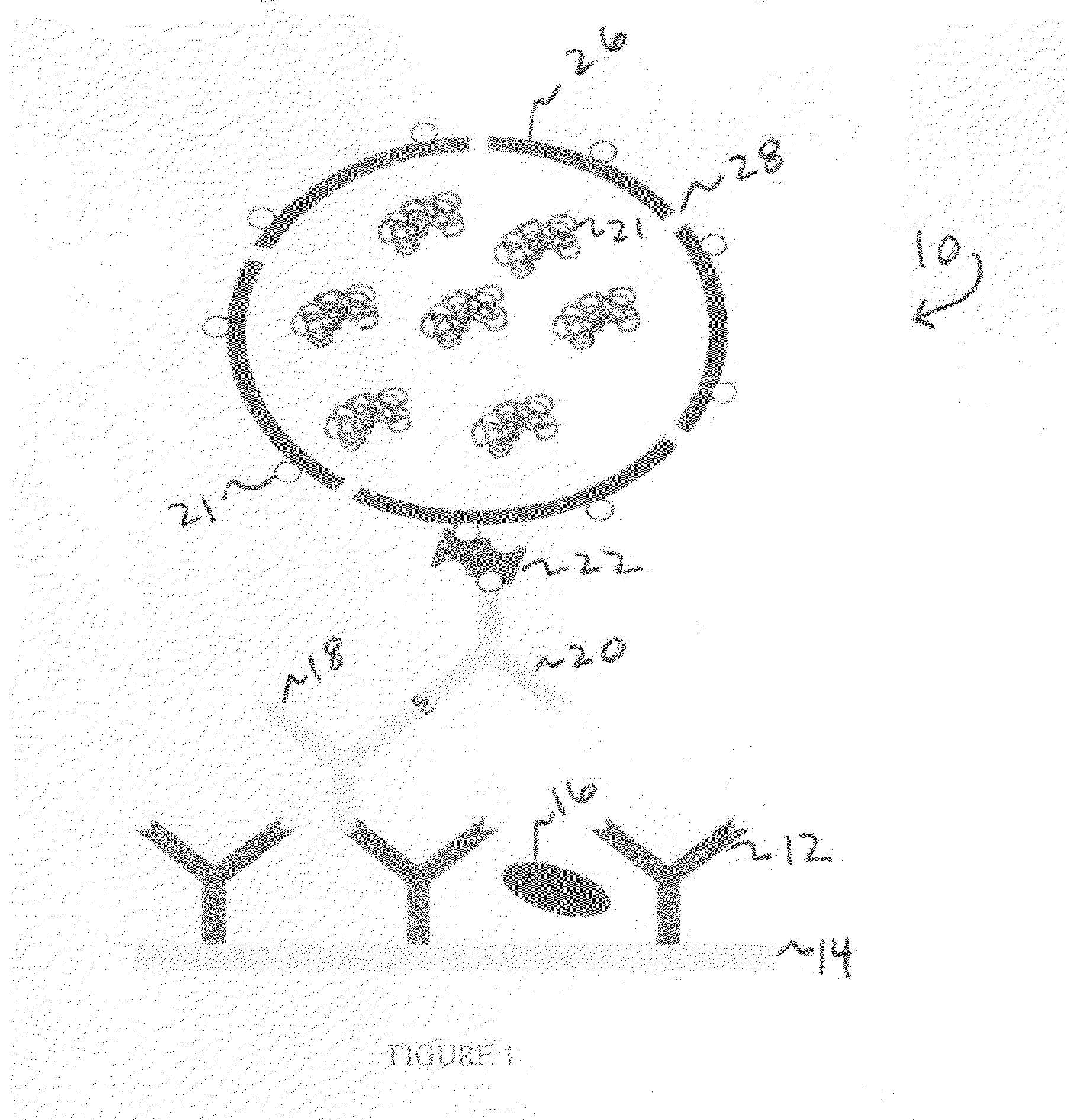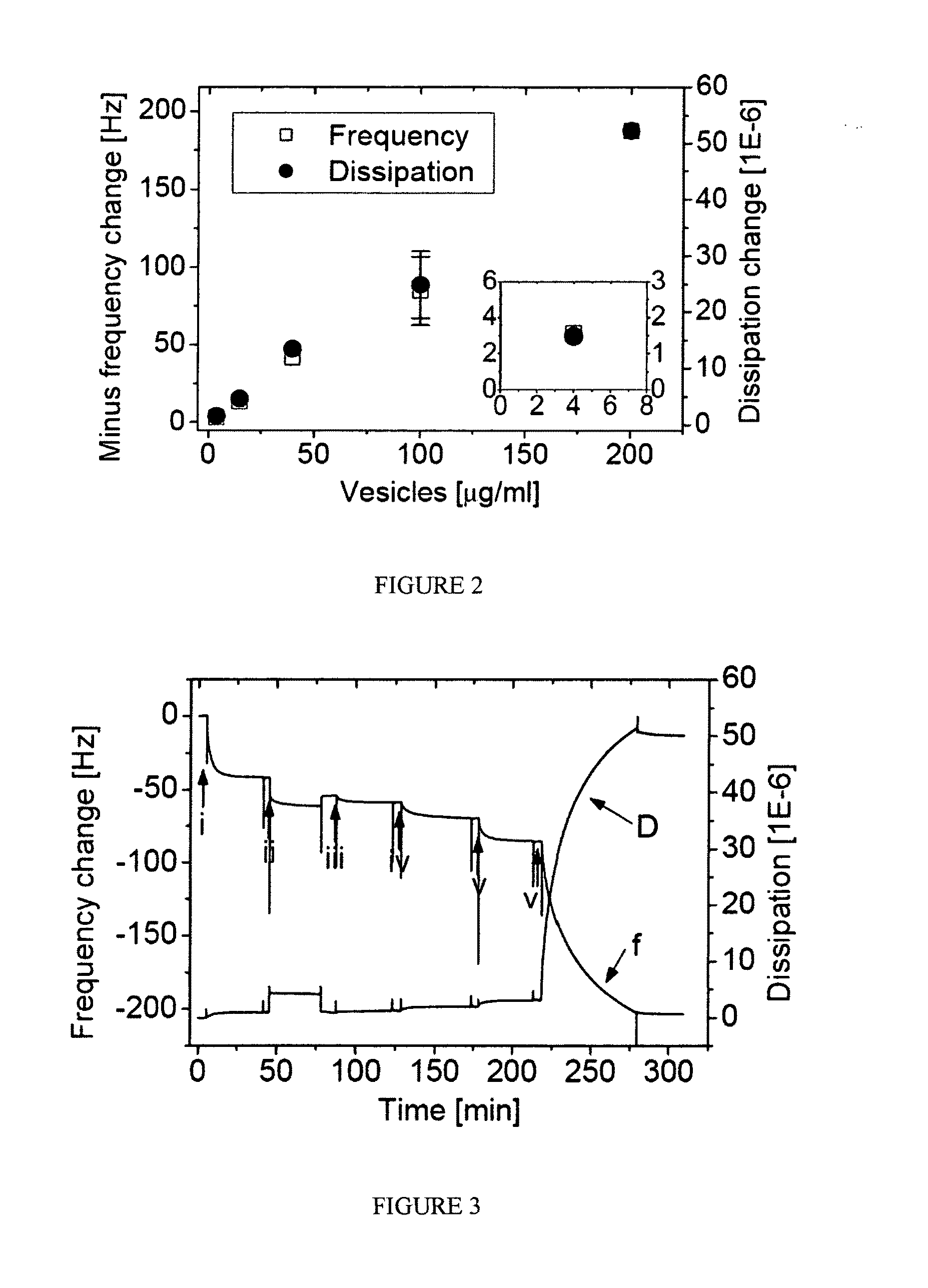Vesicles for use in biosensors
- Summary
- Abstract
- Description
- Claims
- Application Information
AI Technical Summary
Benefits of technology
Problems solved by technology
Method used
Image
Examples
example 1
Synthesis of Biotinylated Amphiphilic Polymer
[0088]Further details for the synthesis of amphiphilic polymers can be found in U.S. Pat. No. 6,916,488. An amphiphilic polymer (HO-PMOXA13-PDMS60-PMOXA13-OH, 1.0 g), 200 mg of biotin, and 300 mg of hexamethylenetetramine were added to a 100 ml 2-neck flask and dried under vacuum for 24 h. Then 50 ml of dry trichloromethane was added under nitrogen and the reaction carried out at room temperature for 60 h. Trichloromethane was evaporated under reduced pressure and the polymer was dissolved in an ethanol / water mixture (4 / 1, v / v). This solution was diafiltrated through a membrane (Mw 1000 cut off) to remove unreacted biotin. The solvent was evaporated under reduced pressure. The polymer was dried under vacuum for 24 h and characterized by 1H NMR (1.2-1.4 ppm, —CH2— of biotinyl group). The yield was 50%.
example 2
Formation of Biotinylated Amphiphilic Polymer Nanoreactors
[0089]Further details for the formation of nanoreactors from amphiphilic polymers can be found in Nardin, C. et al. Reviews in Molecular Biotechnology 90:17-26 (2002) and Nardin, C. et al. Eur. Phys. J. E 4: 403-410 (2001).
[0090]15 mg of HO-PMOXA7-PDMS22-PMOXA7-OH and 1.5 mg of the biotinylated polymer of Example 1 were placed in a 10 ml flask and dissolved in 2 ml of ethanol, then 20 μl of a solution of the bacterial porin OmpF (1.5 mg / ml) was added. The solution was vortexed for 1 min and then ethanol was evaporated under reduced pressure. On the top of the film, an additional 10 μl of OmpF solution was placed, and dried under high vacuum.
[0091]After film drying for approximately 45 min, 5 ml of glucose oxidase (1 mg / ml, or 200 units / ml) in 100 mM acetate buffer pH 5.5 was added. The film was hydrated under shaking for about 12-15 h at 0 C.
[0092]After film hydration, the vesicle solution was filtered through a 1 μm and afte...
example 3
Activity Testing of Nanoreactors in Solution
[0094]10 mM glucose in 100 mM acetate pH 5.5 buffer, 100 units / ml horseradish peroxidase (in 100 mM AcH / AcNa pH 5.5 buffer), and 100 uM Amplex-Red were mixed. The solution was colorless to slightly pink depending on the freshness of the Amplex-Red. 50 μl of the nanoreactors of Example 2 were added to the above mixture and the solution turned purple within 1-3 minutes, indicating that the nanoreactors were functional and the glucose oxidase inside the nanoreactors was active.
PUM
| Property | Measurement | Unit |
|---|---|---|
| Temperature | aaaaa | aaaaa |
| Amphiphilic | aaaaa | aaaaa |
| Concentration | aaaaa | aaaaa |
Abstract
Description
Claims
Application Information
 Login to View More
Login to View More - Generate Ideas
- Intellectual Property
- Life Sciences
- Materials
- Tech Scout
- Unparalleled Data Quality
- Higher Quality Content
- 60% Fewer Hallucinations
Browse by: Latest US Patents, China's latest patents, Technical Efficacy Thesaurus, Application Domain, Technology Topic, Popular Technical Reports.
© 2025 PatSnap. All rights reserved.Legal|Privacy policy|Modern Slavery Act Transparency Statement|Sitemap|About US| Contact US: help@patsnap.com



